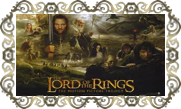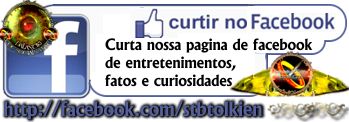

The Tolkienaeum by Mark Hooker (20.06.14 by Pieter Collier) - Comments
| After yesterday's article On Tolkien's Writing: Myth vs. Language I thought it appropriate to present the latest book by Mark T. Hooker, who is probably the most skilled and learned author in this field of interest. The Tolkienæum (Τόλκιναῖον) is the fourth volume in a series on J.R.R. Tolkien’s Legendarium by Tolkien researcher Mark T. Hooker, laureate of the Fifth Beyond Bree Award. The essays range from Tolkien’s probable literary sources, to his historical allusions; from his philological jests, to his serious linguistics. They take a linguistic perspective that begins with a name or a word, and looks for its story in the real world with which Tolkien was familiar. That is the essence of Tolkiennymy, a branch of Tolkien linguistics for which Hooker coined the name. Tolkien commented that his Legendarium was “fundamentally linguistic in inspiration.” In Tolkien’s creative process, a name came first and the story of the name followed. Tolkien once noted that he liked history and was moved by it, especially such history as “throws light on words and names.” These linguistic essays, therefore, look for the stories behind the names as well as for their semantics, and morphology. Tolkien would certainly have wanted the story of the name to be told in addition to the gloss. |
What makes this series of essays different from others about Tolkien is that its author is a linguist who shares Tolkien’s appreciation of the histories of words and names, and who plays at the same kind of linguistic invention himself. Though the essays are linguistic in nature, they were written with the non-linguist in mind in an effort to make the topic accessible to a larger audience. The unavoidable jargon of the field is explained in a glossary, and the narrative constructs a methodical and transparent overview of how Tolkien’s synthetic languages fit into the big picture of linguistics.
The opening essay explores the similarities between the plot elements in Jules Verne’s classic A Journey to the Centre of the Earth (1864) and those in The Hobbit (1937). The Battle of Agincourt (1415) and the role that archers played in it are a part of the English mental legacy. It is compared to the Battle of Fornost to which the Hobbits sent bowmen.
The cultural significance of a pocket handkerchief in nineteenth-century England is the subject of one essay, while the natural history of the thrush is considered in another. The legal import of the period of a year and a day is discussed in a third. The puns in the names Smallburrow and Tuckborough are considered in yet two others. The essays in search of a source for the word Hobbit that were serialized in Beyond Bree has been expanded for this volume.
A special feature of the second half of this volume is Tolkien’s understanding and use of Proto-Indo-European roots. The essay on the Tolkiennym for wolf, for example, reveals a PIE root that has lurked unrecognized in The Etymologies. Highlighting it, and explaining its meaning make it possible to comprehend not only the trick that Tolkien is playing, but also the linguistic skill required to pull it off.
Tolkien’s extensive knowledge of mytho-linguistic issues is explored in an essay that compares Tolkien’s linguistic creations with the concept of animate-inanimate doublets developed by the prominent French linguist Antoine Meillet (1866-1936), who observed that the earlier forms of the Indo-European languages had doublet, animate-inanimate names for things like fire and water. Though there is no mention of Meillet in Tolkien’s writings, there are Tolkiennyms that clearly replicate Meillet’s linguistic model of doublets.
There are separate essays that focus specifically on Tolkien’s use of Slavic and Finnish roots in his nomenclature. Though there are essays on individual Tolkiennyms that are based on Welsh roots, there is no separate, specifically Welsh essay. That was the topic of the previous volume in this series: Tolkien and Welsh (Tolkien a Chymraeg).
One of the new essays presents an etymology for the surname Gamgee. Tolkien did say, after all, that “many ‘English’ surnames, ranging from the rarest to the most familiar, are linguistically derived from Welsh (or British), from place-names, patronymics, personal names, or nick-names; or are in part so derived, even when that origin is no longer obvious.” This is one of those cases.
Linguistic invention is a product of the mind, and is, therefore, not governed by the fixed and immutable rules of the sciences. As Albert Einstein once said, “imagination is greater than knowledge.” Since Tolkien is no longer with us, no ‘proof’—in the scientific sense—of the analyses presented in this volume is possible. The facts, therefore, must speak for themselves when no corroboration is possible. This book combines both previously published and unpublished essays, to bring together the author’s work in one convenient volume. Many of the previously published essays have been especially revised and expanded for this project.
Once again Mark T. Hooker brings us a book that just screams to be read and enjoyed!
About the author Mark T. Hooker
Mark T. Hooker is a specialist in Comparative Translation at Indiana University's Russian and East European Institute (REEI). Retired, he conducts research for publication. His articles on J.R.R. Tolkien have been published in English in Beyond Bree, Parma Nölé, Translating Tolkien and Tolkien Studies, in Dutch in Lembas (the journal of the Dutch Tolkien Society), in Polish in Ancalima, in Brazilian-Portuguese by the Brazilian Tolkien Society (Dúvendor), and in Russian in Palantir (the journal of the St. Petersburg Tolkien Society). He has presented papers at a number of MythCons and at the fourth Lustrum of the Dutch Tolkien Society. He is the author of Tolkien and Welsh, A Collection of Articles on J.R.R. Tolkien's Use of Welsh (CreateSpace, 2012), Tolkien Through Russian Eyes (Walking Tree, 2003), The Hobbitonian Anthology (Llyfrawr, 2009), A Tolkienian Mathomium (LuLu, 2006), Implied, But Not Stated: Condensation in Colloquial Russian and The History of Holland (Greenwood, 1999).
One of his essays is included in the J.R.R. Tolkien’s "The Lord of the Rings" volume of Dr. Harold Bloom’s Modern Critical Interpretations series, billed as "the most comprehensive collection of literary reference in the world." Dr. Bloom is currently the Sterling Professor of the Humanities and English at Yale University.
The review of A Tolkienian Mathomium in Tolkien Studies says, because Hooker’s "breadth of expertise is somewhat unusual for Tolkienian linguists, most of whom come from the Old English/Old Norse quadrant, Hooker has a wide variety of things to say that have not been heard before."
He contributed the article "Reading John Buchan in Search of Tolkien" in the excellent Tolkien and the Study of his Sources, Jason Fisher (ed.).
Hooker is a member of the Walking Tree Publishers Board of Advisors.
Hooker is the laureate of the Fifth Beyond Bree Award (2012), which was presented at The Return of the Ring in Loughborough, England. Unlike previous Beyond Bree Award votes, this time there was a single clear winner.
| Title: The Tolkienaeum: Essays on J.R.R. Tolkien and his LegendariumAuthor: Mark T. HookerPublisher: CreateSpace Independent Publishing PlatformPublication Date: 5 Jun 2014Type: paperback, 288 pages ISBN-10: 149975910XISBN-13: 978-1499759105 |
Spread the news about this J.R.R. Tolkien article:
Read more http://feedproxy.google.com/~r/TolkienLibrary/~3/M_Phd9BEC4s/1161-the-tolkienaeum-by-mark-hooker.php














